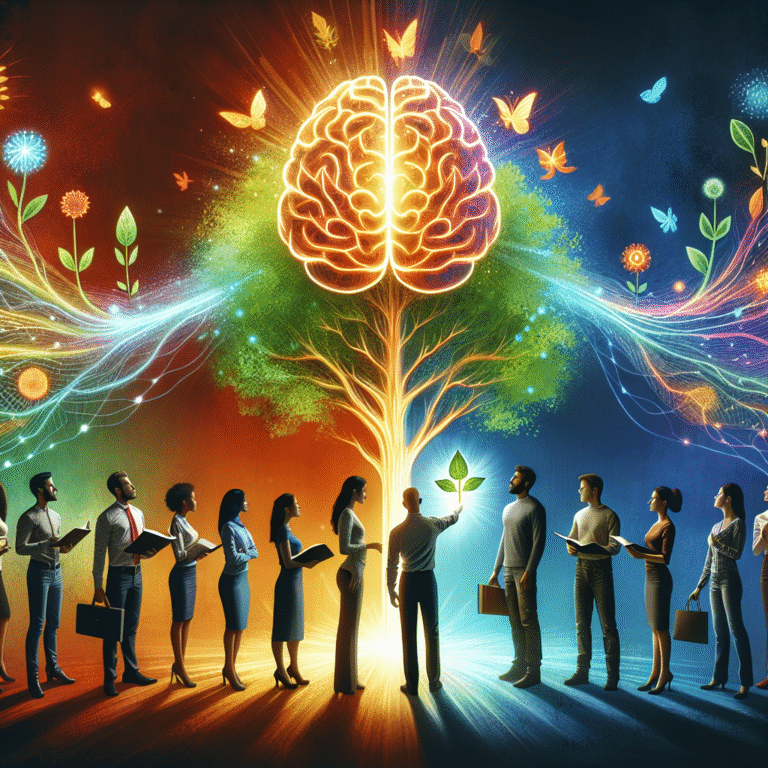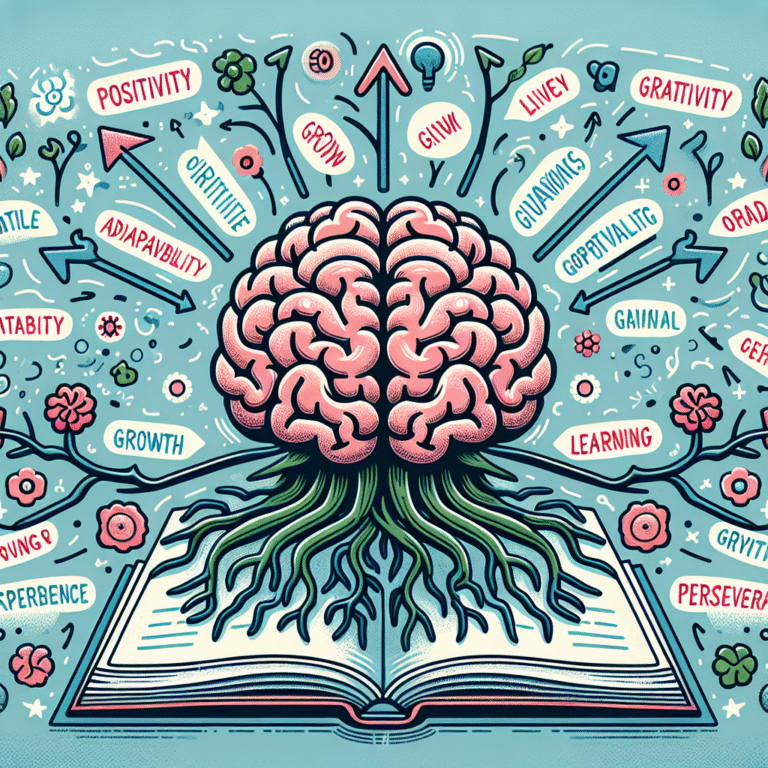
Introduction
In the ever-evolving landscape of education, Social and Emotional Learning (SEL) has emerged as a game-changer, transforming traditional classrooms into nurturing environments that cultivate emotional intelligence, resilience, and interpersonal skills. The relevance of SEL has skyrocketed in recent years, especially as educators and researchers have recognized the profound impact it has on students’ academic performance and emotional well-being. This article explores "SEL in Action: Real-Life Success Stories from Innovative Classrooms," showcasing how schools across the globe are implementing SEL effectively.
These real-life success stories demonstrate the far-reaching benefits of SEL, not just for students but also for teachers and parents. They provide compelling insights into the power of empathy, collaboration, and emotional literacy—the bedrock of a thriving educational experience.
The Importance of SEL in Today’s Classrooms
Understanding SEL
Social and Emotional Learning consists of a framework that helps students develop essential skills to manage their emotions, establish positive relationships, and make responsible decisions. SEL is pivotal not only in fostering a positive classroom environment but also in preparing students for life beyond school.
Why SEL Matters
Research indicates that students who participate in SEL programs display:
- Improved academic performance
- Enhanced emotional regulation
- Increased empathy and social skills
- Decreased behavioral issues
As educational contexts shift towards a holistic approach, SEL serves as an essential tool for modern educators seeking innovative methods to connect with students.
Stories from Innovative Classrooms
Case Study 1: The Mindfulness Movement – Riverside High School
At Riverside High School, educators have integrated mindfulness and SEL into the daily curriculum, a move that has transformed the school culture. Teachers initially introduced mindfulness practices, such as meditation and breathing exercises, during morning homeroom sessions.
Key Results:
- Increased Attendance: The school reported a 15% increase in attendance rates.
- Reduction in Discipline Issues: Behavioral referrals dropped by 30%.
Analysis:
The implementation of mindfulness practices allowed students to develop emotional awareness and self-regulation, essential components of SEL. Teachers reported enhanced focus and decreased anxiety among students, showcasing a genuine case of SEL in action.
Case Study 2: Collaborative Learning – Willow Creek Elementary
Willow Creek Elementary adopted a collaborative learning approach to enhance social skills among students. Class projects required students to work in diverse groups, encouraging empathy and communication.
Key Results:
- Higher Engagement Levels: Surveys showed that student engagement levels rose by 40%.
- Stronger Peer Relationships: Teachers observed improved collaboration, with instances of peer mentoring becoming commonplace.
Analysis:
By fostering collaboration, Willow Creek’s educators utilized SEL principles to build a community-oriented classroom. This real-life success story underscores how collective efforts can yield significant improvements in student interaction and learning outcomes.
Case Study 3: Peer Mentoring Program – Lincoln Middle School
Lincoln Middle School initiated a peer mentoring program designed to pair upperclassmen with freshmen. This initiative aimed to facilitate smoother transitions and build social connections.
Key Results:
- Improved Academic Performance: Freshmen who participated in the program achieved 20% higher GPAs than their peers.
- Enhanced Emotional Support: Participants reported feeling more connected to the school community, with a 50% increase in students expressing feelings of belonging.
Analysis:
The peer mentoring model exemplifies SEL in action. By crafting an emotionally supportive environment, the school leveraged student relationships to foster resilience and academic success.
Case Study 4: Restorative Practices – Harmony High School
At Harmony High School, a focus on restorative practices aimed to address conflict in a constructive manner. Instead of traditional disciplinary measures, the school adopted strategies that emphasized dialogue and understanding among students.
Key Results:
- Reduction in Suspensions: The school reported a 60% reduction in suspensions.
- Stronger Community Bonds: Ninety percent of students felt a deeper sense of community and security.
Analysis:
Restorative practices not only resolve conflicts but also cultivate emotional intelligence, empathy, and cooperation. This case clearly illustrates SEL in action and its transformative effects on school climate.
Case Study 5: SEL Curriculum – Bright Futures Academy
Bright Futures Academy developed a specialized SEL curriculum that integrates emotional intelligence lessons across subjects. The curriculum covers topics like empathy, conflict resolution, and self-awareness.
Key Results:
- Academic Gains: The school experienced a 25% increase in standardized test scores.
- Positive Behavior Metrics: Instances of bullying decreased by 35%.
Analysis:
By embedding SEL into the academic framework, Bright Futures Academy showcases how an intentional approach to social-emotional learning drives both academic and behavioral success.
The Broader Impact of SEL
SEL initiatives not only benefit students but also educators and the school community as a whole. These stories highlight how fostering emotional intelligence creates positive learning environments, resulting in increased teacher satisfaction and reductions in burnout.
Visualizing the Impact
| School | Attendance Increase | Behavioral Referrals Decrease | Academic Gains |
|---|---|---|---|
| Riverside High | 15% | 30% | N/A |
| Willow Creek Elementary | 40% | N/A | N/A |
| Lincoln Middle | N/A | N/A | 20% |
| Harmony High | N/A | 60% | N/A |
| Bright Futures Academy | N/A | N/A | 25% |
The Ripple Effect
The success stories presented reflect how SEL strategies ripple through the educational community. Improved student outcomes lead to happier educators, more engaged parents, and stronger community ties.
Conclusion
The integration of SEL in classrooms is not just beneficial; it is essential for providing a well-rounded educational experience. The stories shared in "SEL in Action: Real-Life Success Stories from Innovative Classrooms" illustrate that when schools prioritize social and emotional learning, students thrive academically and socially.
By learning from these real-life examples, educators can draw inspiration to implement similar strategies in their own classrooms, fostering environments where students not only excel academically but also develop as compassionate, empathetic individuals.
Takeaway
The path to innovative education lies in understanding the profound impact of SEL. As educators, parents, and community members, let us advocate for and support the integration of these essential skills into our schools, fostering future generations capable of navigating the complexities of life with confidence and resilience.
FAQs
1. What is SEL?
Social and Emotional Learning (SEL) refers to the process through which children and adults learn to recognize and manage emotions, develop empathy for others, establish positive relationships, and make responsible decisions.
2. How can teachers implement SEL?
Teachers can implement SEL by incorporating strategies like mindfulness practices, collaborative learning, peer mentoring, and restorative practices into their curriculum to promote emotional intelligence and relational skills.
3. What are the benefits of SEL for students?
SEL positively impacts students by improving academic performance, fostering emotional regulation, enhancing social skills, and decreasing behavioral issues.
4. Can SEL benefit teachers as well?
Yes, SEL benefits teachers by creating positive classroom environments, reducing stress and burnout, and enhancing job satisfaction.
5. How can parents support SEL at home?
Parents can support SEL by encouraging open discussions about emotions, modeling empathy and communication skills, and fostering environments that promote emotional awareness and resilience.















